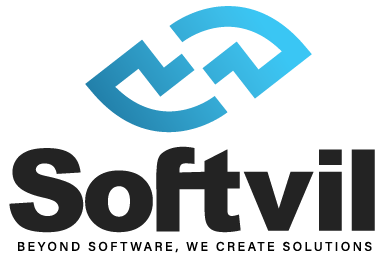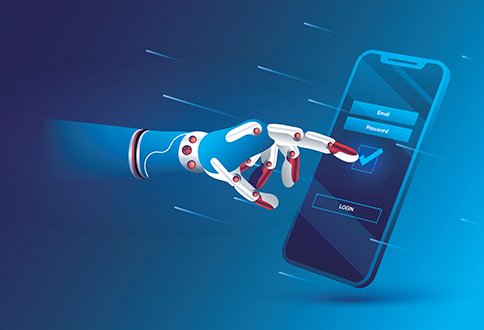Introduction
The world of mobile app development is constantly evolving, fueled by technological advancements and changing user expectations. As we enter the year 2023, it becomes increasingly important for developers and businesses to stay informed about the latest trends shaping the industry. In this article, we will explore the top 5 mobile app development trends that are set to make a significant impact in the coming years.
Firstly, we will delve into the integration of 5G technology, which promises faster speeds and lower latency, opening up a whole new realm of possibilities for mobile apps. Next, we will discuss the adoption of artificial intelligence (AI) and machine learning (ML) in app development, enabling personalized experiences and streamlined processes. We will then explore the world of augmented reality (AR) and virtual reality (VR) and their transformative effects on app experiences. Additionally, we will highlight the growing importance of chatbots in enhancing user communication within apps. Lastly, we will delve into cross-platform development frameworks, which allow for the creation of apps that seamlessly run on multiple platforms.
By examining these top 5 trends, we aim to provide valuable insights and guidance to developers and businesses, enabling them to stay ahead in the dynamic world of mobile app development. So, let’s dive into the future of mobile apps and discover the exciting possibilities that lie ahead.
5G Integration
The integration of 5G technology is set to revolutionize mobile app development, offering a multitude of benefits and transforming user experiences. With its faster speeds, lower latency, and enhanced capacity, 5G opens up new possibilities for developers and businesses alike. Firstly, the increased speed of 5G networks allows for quicker data transmission, enabling mobile apps to deliver content and services seamlessly. This enhanced speed eliminates buffering times, resulting in smoother video streaming, faster downloads, and real-time interactions. Mobile apps can leverage 5G’s high bandwidth to offer high-definition video content, immersive AR/VR experiences, and complex gaming environments, providing users with a more engaging and immersive app experience.
Secondly, the lower latency of 5G networks significantly reduces the delay in data transmission, enabling near-instantaneous responses between apps and servers. This low latency is particularly beneficial for applications that require real-time interactions, such as video conferencing, online gaming, and IoT devices. Mobile apps can leverage 5G’s low latency to deliver seamless and responsive user experiences, ensuring that actions and commands are executed promptly.
Examples of potential applications that can leverage 5G capabilities include:
Augmented Reality (AR) and Virtual Reality (VR) Apps: With 5G’s high bandwidth and low latency, AR and VR experiences can be delivered seamlessly, creating immersive environments for gaming, virtual tours, and remote collaboration.
Internet of Things (IoT) Applications: 5G’s high capacity and low latency make it ideal for connecting and managing a vast number of IoT devices. This opens up opportunities for smart homes, smart cities, and industrial automation, where mobile apps can control and monitor connected devices in real-time.
AI & ML Adoption
Artificial intelligence (AI) and machine learning (ML) have become increasingly prevalent in mobile app development, offering powerful tools to enhance app personalization, automate processes, and improve user engagement. The integration of AI and ML technologies brings a new level of intelligence and sophistication to mobile apps.
In mobile app development, AI algorithms can analyze vast amounts of user data and provide personalized recommendations, content, and experiences. By understanding user preferences, behaviors, and patterns, AI-powered apps can deliver tailored suggestions, product recommendations, and targeted advertisements. This level of personalization enhances user engagement and satisfaction, ultimately leading to increased user retention and loyalty.
Machine learning algorithms play a crucial role in mobile app development by enabling apps to learn and adapt based on user interactions and feedback. ML algorithms can identify patterns, make predictions, and automate tasks, saving time and effort for both developers and users. For example, language processing algorithms can power chatbots within apps, allowing for intelligent and natural language interactions with users, enhancing customer support and user experience.
Examples of AI-powered apps in different industries include:
Healthcare: AI-powered mobile apps can assist in diagnosing diseases, monitoring vital signs, and providing personalized treatment recommendations. They can analyze patient data, provide medication reminders, and offer virtual consultations, improving healthcare accessibility and outcomes.
Retail: AI-powered mobile apps can offer personalized shopping experiences, recommend products based on user preferences, and enable visual search for finding similar items. These apps can analyze customer data to provide targeted promotions, loyalty programs, and personalized shopping recommendations.
AR/VR Experiences
Augmented reality (AR) and virtual reality (VR) technologies are rapidly gaining significance in the realm of mobile app development. These immersive technologies offer unique opportunities to engage users in interactive and captivating experiences, revolutionizing the way apps are designed and consumed.
AR and VR have the ability to transform ordinary mobile apps into extraordinary and immersive experiences. AR superimposes virtual elements onto the physical world, whereas VR generates fully virtual environments from scratch. By integrating AR and VR into mobile apps, developers can create interactive simulations, lifelike visualizations, and engaging storytelling experiences. The utilization of AR and VR technologies in mobile apps enhances user engagement by providing a sense of presence and interactivity. Users can explore virtual environments, interact with virtual objects, and even collaborate with others in shared augmented spaces. These experiences bring entertainment, education, and practical utility to a whole new level, captivating users and leaving a lasting impression
Successful implementations of AR and VR can be seen across various sectors. In manufacturing, AR-powered mobile apps enable technicians to access real-time instructions and visualizations, enhancing efficiency and reducing errors. In the retail industry, AR apps allow customers to try on virtual clothing, visualize furniture in their homes, or navigate virtual stores. The education sector benefits from AR and VR apps by offering immersive learning experiences, such as virtual field trips and interactive science simulations. Moreover, the entertainment and gaming industries have seen significant advancements with AR and VR. Mobile games now incorporate augmented elements into real-world environments, providing users with thrilling and interactive gaming experiences. AR and VR also find applications in healthcare, architecture, tourism, and training, among others.
Chatbots for Enhanced Communication
Chatbots have become a prominent trend in mobile app development, revolutionizing the way businesses interact with their customers. These artificial intelligence-powered virtual assistants are designed to simulate human conversation and provide instant responses, offering numerous benefits in terms of customer support and user interaction. The utilization of chatbots in mobile apps has seen a significant rise due to their ability to provide quick and efficient customer support. Businesses can integrate chatbots into their apps to address customer queries, offer product recommendations, and guide users through various processes. Chatbots operate 24/7, ensuring round-the-clock availability and enhancing customer satisfaction by providing instant responses to inquiries.
The benefits of chatbots extend beyond customer support. They can personalize user experiences by analyzing user data and tailoring recommendations or content based on individual preferences. By employing natural language processing and machine learning algorithms, chatbots can understand user intent, provide relevant information, and even offer conversational experiences that simulate human-like interactions. Chatbots are transforming user experiences across various industries. In e-commerce, chatbots can assist customers in finding products, placing orders, and tracking shipments, offering a seamless shopping experience. In the banking sector, chatbots facilitate financial transactions, provide account information, and offer personalized financial advice. Additionally, chatbots find applications in travel and hospitality by assisting with booking reservations, answering travel-related queries, and providing destination recommendations.
Cross-Platform Development Frameworks
Cross-platform development frameworks such as React Native and Flutter have gained significant popularity in mobile app development, offering numerous advantages for developers and businesses. These frameworks allow developers to write code once and deploy it across multiple platforms, streamlining the app development process and improving efficiency. One of the key advantages of cross-platform development frameworks is code reusability. With frameworks like React Native and Flutter, developers can write a single codebase that can be used to create apps for both iOS and Android platforms. This eliminates the need for separate development teams and reduces the time and effort required to build and maintain apps for different platforms. Code reusability also ensures consistency in user experience across platforms.
Cross-platform development frameworks also provide access to a wide range of pre-built components and libraries, enabling developers to accelerate the app development process. These frameworks offer a rich ecosystem of tools and resources, allowing developers to leverage ready-made solutions for various functionalities such as UI components, navigation, and data management. While cross-platform development offers numerous benefits, it is not without its challenges. One challenge is maintaining platform-specific performance and native-like user experiences. As cross-platform frameworks use a layer of abstraction to bridge the gap between different platforms, there may be limitations in accessing certain device features or achieving the same level of performance as native apps. To overcome these challenges, developers need to follow best practices such as optimizing code, leveraging platform-specific capabilities when necessary, and conducting thorough testing across different devices and operating systems.
Conclusion
The top 5 mobile app development trends for 2023 and beyond are 5G integration, AI & ML adoption, AR/VR experiences, chatbots for enhanced communication, and cross-platform development frameworks. Staying updated with these trends is crucial for developers and businesses to remain competitive in the dynamic app market. Embracing 5G technology opens up new possibilities for app capabilities and performance. AI and ML enhance personalization and user engagement, while AR/VR create immersive experiences. Chatbots improve customer support and interaction. Cross-platform development frameworks streamline app development for multiple platforms. Looking ahead, the future of mobile app development holds immense potential with continued advancements in these areas. As technologies evolve, developers and businesses must adapt to leverage the latest trends, providing innovative and engaging app experiences to meet the evolving needs of users in a rapidly changing digital landscape.

